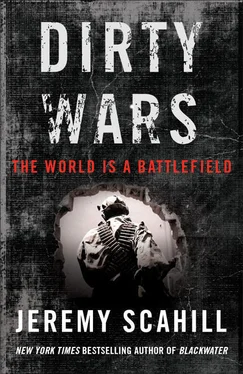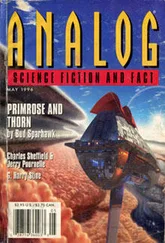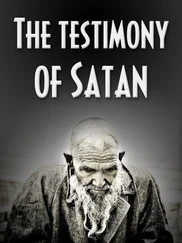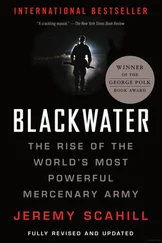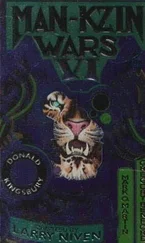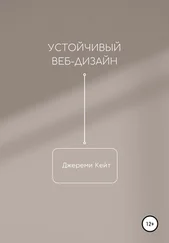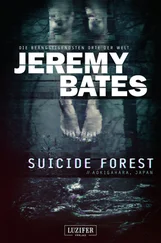On 9/11, the CIA did not have a large in-house paramilitary capability—just six hundred to seven hundred covert operatives at most. So, many of its hits relied heavily on Special Forces and Special Operations Forces—which numbered more than 10,000—loaned to the Agency for specific missions. “All of the paramilitary expertise really came from the military, from Special Forces,” recalled Vincent Cannistraro, a career CIA counterterrorism officer, who also did stints at the Pentagon and the National Security Agency (NSA). “It didn’t really exist, except in a skeletal way, in the CIA,” he told me. “The Special Forces had the expertise. The resources were Department of Defense resources, and the transfer of those under CIA direction was a policy decision made at the national level.”
Initially, on orders from President Bush, the CIA was the lead agency in the global war. But Cheney and Rumsfeld realized early on that it certainly didn’t need to be the only dark-side force and that there was another capability available to the White House that could provide far greater flexibility and almost no congressional or State Department meddling. Although some operations necessitated working through the CIA—particularly when it came to establishing “black sites” with the cooperation of foreign intelligence services—Cheney’s crew did not trust the Agency’s bureaucrats. “I think Rumsfeld, Cheney thought that the CIA was a bunch of pansies, much the way they thought about the State Department,” recalled Wilkerson, Powell’s former chief of staff. Wilkerson said that, during this period, he began to see a pattern of “what I consider assumption of presidential power, commander in chief powers, by the vice president of the United States.” Cheney, in particular, he said, longed for the covert wars of the 1980s, “the Ronald Reagan period of helping the Contras to fight the Sandinistas” and the “almost symbiotic relationship between some of the Special Operations Forces and the clandestine operators in the CIA. That, I think comes to a real art form in the War on Terror, as one would suspect it would, because this is what Cheney wanted to do. Cheney wanted to operate on the clandestine side.”
Rumsfeld saw the lending of US Special Ops Forces to the CIA as creating a problematic, obstructionist middle man whose operations could be lawyered to death. He wanted America’s premier direct-action forces to be unrestrained and unaccountable to anyone except him, Cheney and the president. “The CIA can’t do anything without the intelligence oversight committees knowing about it, or being informed almost immediately thereafter,” said Cannistraro, who helped start the CIA’s Counterterrorism Center. “When you had CIA carrying out a paramilitary operation, prior to 9/11, that meant that there were Special Forces elements that were attached to CIA, and therefore they were under civilian control [and] what they were doing for CIA was reported to the Intelligence Oversight Committee. But, if the military carries it out, it doesn’t follow the same guidance, because it doesn’t get reported to the intelligence oversight committees. They’re military operations. And therefore they’re part of a war, or ‘military preparing.’” Cannistraro told me that some of the most controversial and secretive activities conducted globally would be done through “the military under the ‘Cheney Program,’ because it didn’t have to be briefed to the Congress.”
While Powell and the State Department were cautioning against widening the focus beyond Afghanistan, al Qaeda and the Taliban, Rumsfeld had been pushing to take the military campaign global. “You have no choice but to take the battle to the terrorists, wherever they may be,” Rumsfeld declared in December 2001. “The only way to deal with a terrorist network that’s global is to go after it where it is.” Rumsfeld wanted Special Operations Forces front and center, and he asked General Charles Holland, the commander of Special Operations Command, to draw up a list of regional targets where the United States could conduct both retaliatory and preemptive strikes against al Qaeda. In late 2001, Feith directed Jeffrey Schloesser, then chief of the War on Terrorism Strategic Planning Cell, J-5 of the Joint Staff, and his team to prepare a plan called “Next Steps.” Afghanistan was just the beginning. Rumsfeld wanted plans drawn up to hit in Somalia, Yemen, Latin America, Mauritania, Indonesia and beyond. In a memo to President Bush two weeks after 9/11, Rumsfeld wrote that the Pentagon was “exploring targets and desired effects in countries where CIA’s relationship with local intelligence services either cannot or will not tackle the projects for the U.S.” This included countries that would invite the United States in “on a friendly basis,” but also those that would not.
The world is a battlefield—that was the mantra.

4. The Boss: Ali Abdullah Saleh
YEMEN, 1970–2001; WASHINGTON, DC, 2001—When the planes slammed into the World Trade Center, Ali Abdullah Saleh knew he needed to act fast. The Yemeni president was famous in intelligence circles as a wily survivor who had adeptly navigated his way through the Cold War, deep tribal divisions in his country and terrorism threats, largely unscathed. When 9/11 happened, Saleh was already in trouble with the United States following the bombing of the USS Cole off the port of Aden in southern Yemen, and he was determined that 9/11 would not mark the beginning of the end of his decades-long grip on power. As the Bush administration began to map out its plans for a borderless war in response to 9/11, Saleh hatched a plan of his own with one central goal: to hold on to power.
Saleh became Yemen’s leader in 1990, following the unification of the north, which he had ruled since the 1970s, and the Marxist government based in Aden, in the south. In Yemen, he was known as “The Boss.” Colonel Lang, who served for years as the US defense and army attaché to Yemen, first met Saleh in 1979. Fluent in Arabic, Lang was often brought into sensitive meetings as a translator for other US officials. Lang and his British MI-6 counterpart would often go hunting with Saleh. “We would drive around with a bunch of vehicles, and shoot gazelle, hyenas,” Lang recalled, adding that Saleh was a “reasonably good shot.” Of Saleh, Lang said, “He’s really a very charming devil,” describing Saleh’s multidecade rule as “quite a run, in a country where it’s ‘dog-eat-dog.’ It’s like being the captain on a Klingon battle cruiser, you know? They’re just waiting.” Saleh, Lang said, proved a master of playing tribes against each other, co-opting them at crucial moments and outsourcing his problems. “There’s a precarious balance all the time between the authority of the government and the authority of these massive tribal groups. The government normally only controls the land its forces sit on, or where it’s providing some service that the tribal leaders and population wants, like medical service, or education. So you end up with a lot of defended towns, with a lot of checkpoints around them, and little punitive expeditions going on, all the time, by the government around the country, to punish people with whom they are quarreling over some issue.”
During the mujahedeen war against the Soviets in Afghanistan in the 1980s, thousands of Yemenis joined the jihad—some of them coordinated and funded directly by Saleh’s government. “They were all sent to Afghanistan to face the former Soviet invasion and occupation,” Saleh asserted in an interview with the New York Times in 2008. “And the USA forced friendly countries at that time, including Yemen, the Gulf states, Sudan, and Syria, to support the mujahedeen—they called them freedom fighters—to go fight in Afghanistan. The USA used to strongly support the Islamist movement to fight the Soviets. Then, following collapse of Soviets in Afghanistan, the USA suddenly adopted a completely different and extreme attitude towards these Islamic movements and started to put pressure on the countries to have confrontation with these Islamic movements that were in the Arab and Islamic territories.”
Читать дальше
